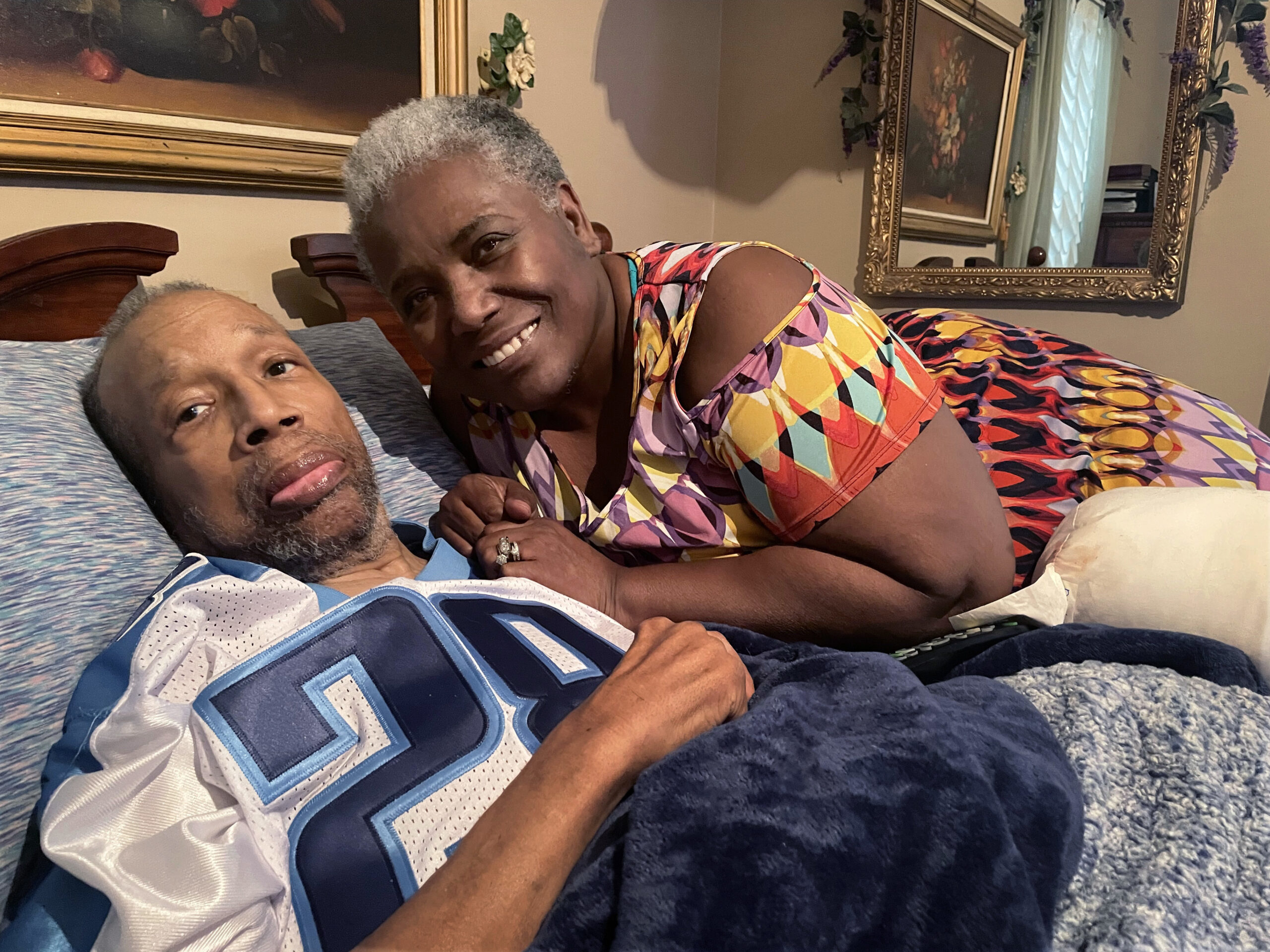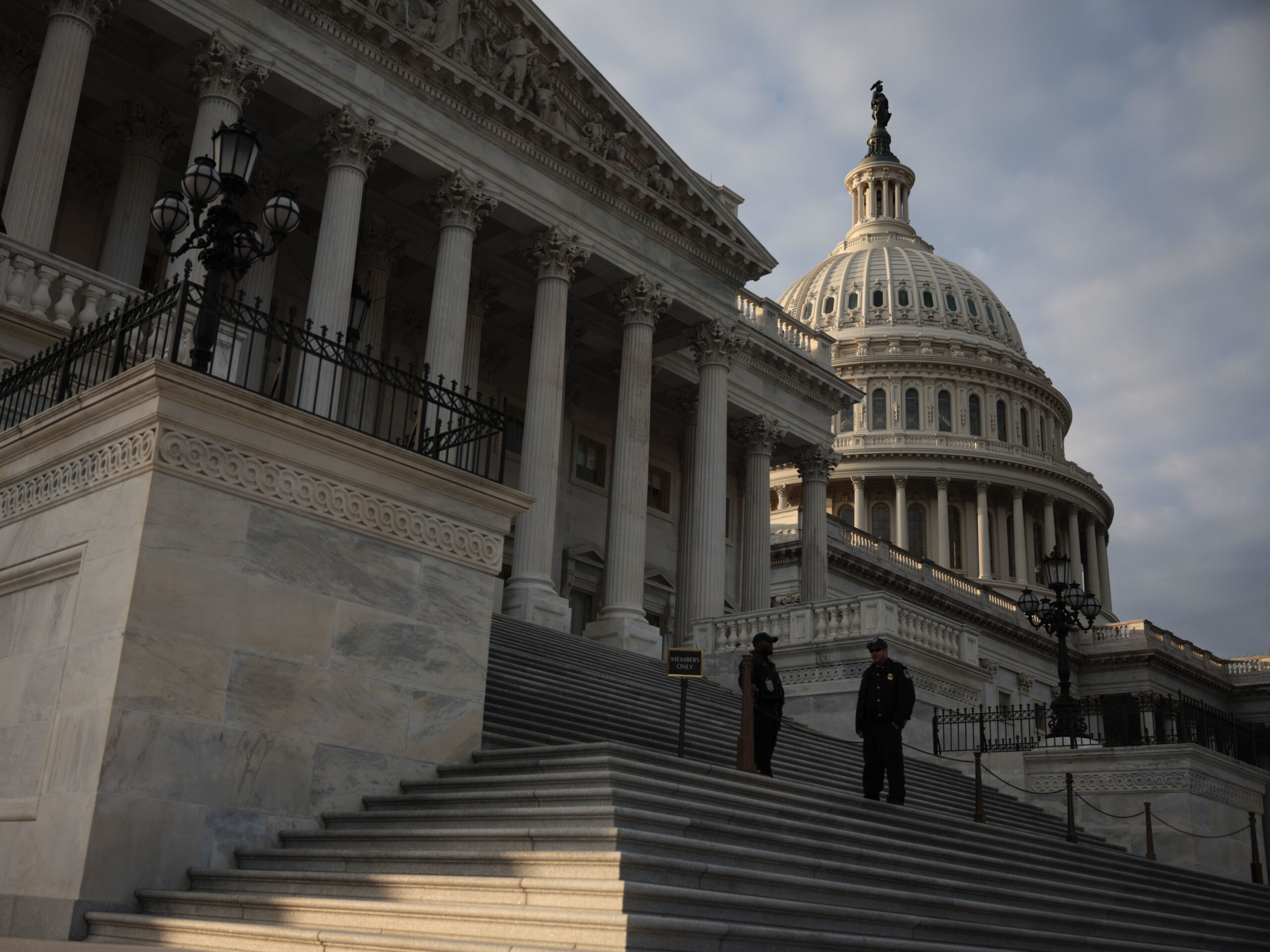Struggle is nothing new to Foxx Whitford.
He grew up desperately poor in Fairfield, Calif., losing a beloved brother to epilepsy and getting evicted from his home as a child. As a teenager, he joined the Marines to help put himself through college and he completed a harrowing tour in Afghanistan. All of that hardship, he says, prepared him for one of his biggest life challenges: getting into and through nursing school during a pandemic.
“Every time things get hard, I always think about all those losses and hard times,” says Whitford, a nursing student at California State University, East Bay.
And everything about his nurse training has been hard. Whitford, a C-average student in high school, says he spent sleepless nights in community college, studying and teaching himself to learn. After nearly failing an anatomy course, he eventually made the dean’s list and won student-athlete awards. Still, when he tried to transfer to a four-year bachelor of science in nursing program, he lost out. There were some 800 others applying for 64 slots.
He waited a year to reapply and finally got in. Then the pandemic hit — making it even more difficult to get the clinical experience he needs to graduate.
Across the country, hospitals desperate for nurses — especially in acute care —are trying to address intense burnout among health care workers and accelerated nurse retirements by hiring new graduates. They’re offering jobs to students even before they graduate, and in many cases offering bonuses and loan repayment as financial incentives. And the interest is there; enrollments and applications in baccalaureate and advanced nursing degree programs increased last year. Leaders in nursing say the trends — which predate the pandemic — are the same for certificate programs in licensed practical nursing, licensed vocational nursing and certified nursing assistants programs.
Yet — paradoxically — becoming a nurse has become more difficult, narrowing the pipeline for new nurses coming through the system.
A lack of instructors is part of the problem
One of the biggest bottlenecks in the system is long-standing: There are not enough people who teach nursing. Educators in the field are required to have advanced degrees yet typically earn about half that of a nurse working the floor of a hospital.
The pandemic worsened those financial strains, forcing many educators to look for more lucrative work, says Sharon Goldfarb, who has advanced degrees in nursing care, has worked as an RN and family nurse practitioner and teaches nursing at several schools near San Francisco. Her spouse lost his job during the pandemic and that is one of the most common reasons educators are leaving, she says. She surveyed 91 community colleges in California and found nursing faculty declined 30% since the pandemic began.
“To lose an additional 30% has been devastating,” she says. “There is not a school I know of that isn’t desperately looking for nursing faculty.”
That desperation is compounded by an aging demographic. With so many in their late 50s and 60s, the country’s nursing faculty is continuing to decline, to about two-thirds what it was in 2015.
Taken together, those factors are severely limiting the number of students that schools can accept, and in some cases it disrupts classes themselves.
“Some schools went on hiatus; some schools reduced their enrollment, so they took even fewer students; some schools … scrambled so much, they actually have to extend semesters,” Goldfarb says.
The pandemic curtailed training programs
In addition, since the beginning of the pandemic, nursing students have had a harder time getting the clinical or hands-on training required to graduate, because hospitals curtailed their training programs to control the risk of infection.
“Faculties and schools have found ways to innovate, to educate students by the use of the internet, distance learning, and simulation labs,” says Peter Buerhaus, a professor and health economist at Montana State University’s College of Nursing who studies the nursing workforce. Those innovations have helped mitigate the impact of the pandemic on education, he says, but schools aren’t like factories that can ramp up their production.
The nursing shortage, he says, was more acute in the 1990s, when hospitals drastically cut back on staff to cut costs. But with the retirement of baby boomers, the influx of new nurses needs to keep up.
Last year, enrollment in baccalaureate and higher-level nursing degree programs increased, but colleges and universities (not including community college nursing programs) still turned away more than 80,000 qualified applicants due to shortages of faculty, clinical sites and other resources, according to the American Association of Colleges of Nursing.
How one applicant persevered
Whitford, the nursing student aiming to become an RN, is getting even more specialized training as an ER nurse. He says many people ask him how he has persevered through the gantlet of nursing school. “Everything I have, I’ve always had to work extremely hard for,” he tells them.
At age 10, shortly after his brother — whom he describes as his “best friend” and idol — died of epilepsy, Whitford started working at a bowling alley to supplement his father’s truck-driving income. “We had to struggle a lot when I was growing up, in terms of getting food on the table.”
His early childhood tested him, he says, and ultimately deepened his resolve.
“Pursuing nursing,” he says, “was my ticket to doing everything that I wanted.” And that meant getting out of poverty and into meaningful work he loved.
His childhood experiences also made him feel comfortable in chaos. So when the pandemic hit, Whitford became even more eager to join the front lines: “I like being in tents outside in [expletive] conditions — terrible stuff that people don’t want to do,” he says. “I’m not always the strongest in those conditions, but I like working through them, so that way I can learn how to be strong in those situations. Because I feel like, a lot of times when things go wrong, people would look to me for answers.”
For many others, though, the path to nursing is too steep.
Financial strain often gets in the way
Over the past 15 years, Nathan Ballenger, 46, has tried three separate times to enroll in nursing school. He’s harbored lifelong dreams of a career in medicine, which the Colorado native considers heroic work. During the pandemic, he even got certified as an emergency medical technician, hoping that would give him a foot in the door and an advantage over his fellow nursing school applicants.
But the cost and difficulties of a nursing degree program and training — and the pay cut he would have had to take compared to what he earns his current salesman’s job — meant he simply couldn’t afford to go in that direction.
“It’s hard for me to say that I see a path toward that,” he says, “regardless of the fact that I hold it in my mind and in my heart as something that I sure wish I could have done in this lifetime.”
Hospitals recognize the need to lower some of the barriers to becoming a nurse, while maintaining high standards of education, training and patient care.
Hospitals are not only offering full scholarships and loan repayment to recruit registered nurses these days, many are also offering to put new graduates through intensive training to acquire special skills, says Robin Begley, CEO of the American Organization for Nursing Leadership and chief nursing officer and senior vice president of workforce for the American Hospital Association. Many hospitals are also partnering with nursing schools to do what they can to widen the pipeline by allowing hospital nurses to take time off to teach, for example.
“We really have to put a real emphasis on the pipeline and making sure that everybody who wants to become a nurse has the opportunity to be able to secure a position in a nursing program,” Begley says.
Copyright 2021 NPR. To see more, visit https://www.npr.org.
9(MDAxODM0MDY4MDEyMTY4NDA3MzI3YjkzMw004))

9(MDAxODM0MDY4MDEyMTY4NDA3MzI3YjkzMw004))








